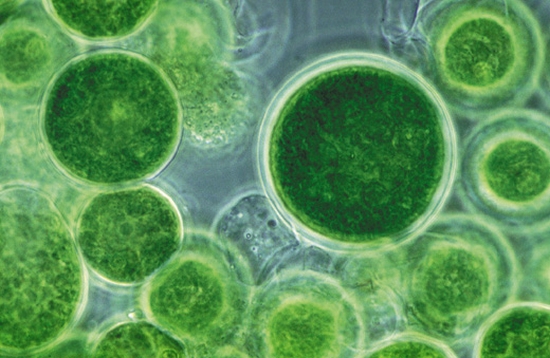
Several biologists and researchers have found that many enzymes which change the structure of DNA in living organisms can be manipulated to tweak the overall characteristics of the organism. Initially this might sound a little rude, but these researchers believe that changing these traits can benefit not only the organism but the environment as well. Genetic engineering techniques have been applied to various industries principally medicine and agriculture with some success, but now researchers are trying to replicate it to help solve the energy crisis to an extent. From pigs that excrete environmentally friendly poop to plants that generate electricity, genetic engineering can make possible everything that sounds science-fiction at the moment. Here is a list of 12 such organisms that have seen the wonders:
Pigs that have earth-friendly poop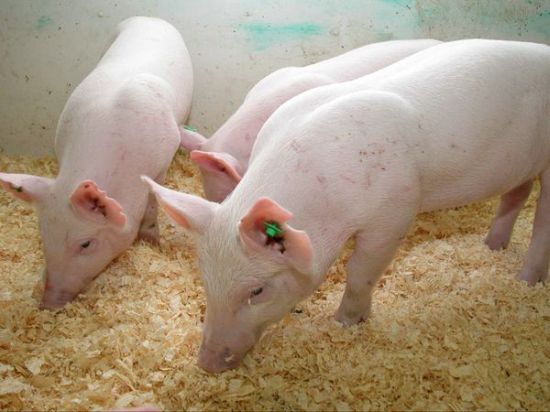
Researchers at the University of Guelph have been approved for limited production of a genetically engineered pig that will protect aquatic life with earth-friendly poop. Dubbed “Enviropig,” the pig has been engineered in a manner that its urine and feces contain up to 65 percent less phosphorous than usual.
Engineered bacterium for cellulosic ethanol
Researchers at Dartmouth’s Thayer School of Engineering and Mascoma Corporation have found a way to produce cellulosic ethanol from thermophilic bacterium, which has been engineered to trigger the process of converting waste materials into biofuel without additional heat. The carbon neutral process also promises to provide biofuel in a cost-effective manner.
Cows that eat less and produce less methane
Several Canadian researchers have tried to genetically engineer cows in a way that makes them eat less food and hence emit less methane. Researchers believe that on an average three ruminants have the same global warming potential as one mid-sized car and reducing methane emissions of cattle could be similar to making cars more eco-friendly. These researchers have created a line of cattle that produce up to 25 percent less methane than an average cow.
Bacterium engineered to produce fuel by eating CO2
A team of researchers from the US has genetically modified bacteria to eat carbon dioxide from the atmosphere and produce isobutyraldehyde, which can further be used to produceisobutanol. The modified bacteria are highly efficient in the conversion process and are powered by sunlight. The research team was successful in genetically modifying bacteria to produce fuel using a process that is around 10 times faster than hydrogen production and about 100 times faster than genetically engineered ethanol production.
Engineering bacterium to produce earth-friendly plastic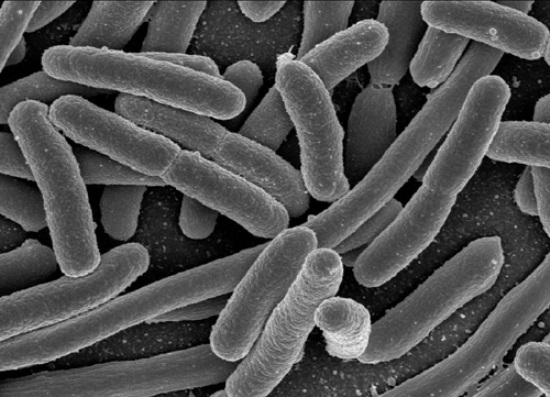
Scientists at San Diego-based company Genomatica Inc. genetically engineered Escherichia coli, bacterium generally found in the gut, to produce 1,4-Butanediol (BDO). BDO is a monomer, or a building block, which can be used to synthesize a variety of plastics, rubber and synthetic fibers. In order to produce BDO on a large scale, the E. coli bacteria are cultivated in fermentation tanks on a diet of sugar and water and the BDO thus produced can be purified and separated.
Genetically engineered organisms use photosynthesis to create hydrocarbons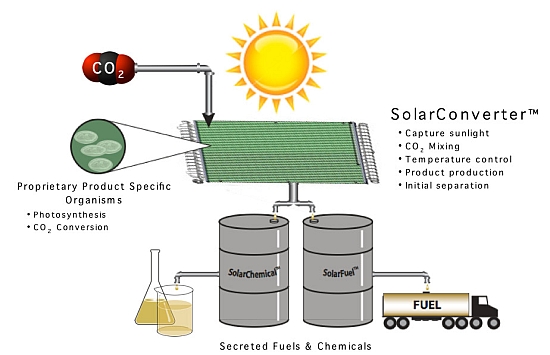
California-based Joule Biotechnologies has created a system that converts carbon dioxide into liquid biofuel using a solar converter. The converter contains an internal broth of gray water, nutrients and unnamed genetically engineered organisms that use photosynthesis to do the job. The company believes that the process, dubbed Helioculture, could yield up to 20,000 gallons of usable fuel per year per acre of land for approximately the same cost as fossil fuels.
Engineered tobacco plants grow synthetic solar cells
Researchers at UC Berkeley have found a way to engineer tobacco plants to grow syntheticphotovoltaic and photochemical cells, which can later be extracted, dissolved in a solution and sprayed onto any substrate to create solar cells.
Engineered viruses for non-toxic batteries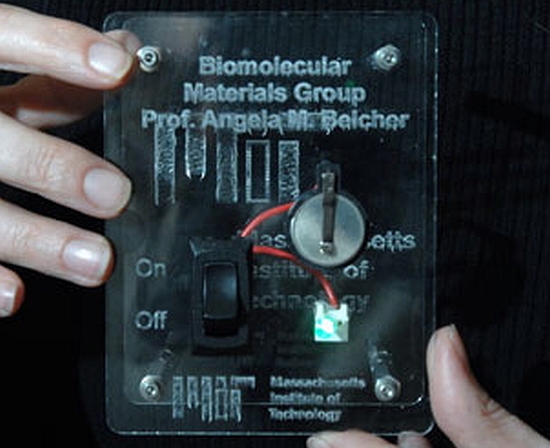
Researchers at MIT have developed a new technique by which lithium-ion batteries could be made green, without showing any effect on the overall capacity and performance of the cells. The researchers have shown that they can genetically engineer viruses to build both positive and negative charged ends of a lithium-ion battery. This new technology can be used to build batteries of different sizes which can be used in everything from an iPod to an electric car.
Engineered bacteria produces biofuel from sugars
Biologists in the United States have tried to engineer Escherichia coli bacterium to feast on sugars found in wood chips, straw and biomass waste to secrete molecules of fuel. The incorporated genes enable production directly and the cell doesn’t even have to be broken to get the fuel out.
Genetic engineering process to turn trees into new energy sources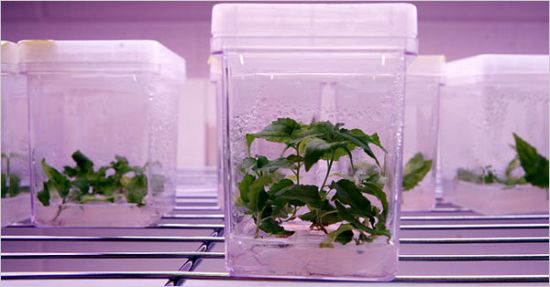
Scientists have developed a controversial genetic engineering process that can change thecomposition of wood in the hope of turning trees into new energy sources. The major goal is to reduce the amount of lignin, a chemical compound that interferes with efforts to turn the tree’s cellulose into biofuels like ethanol.
Cloning the “Diesel Tree” for mass production of biofuel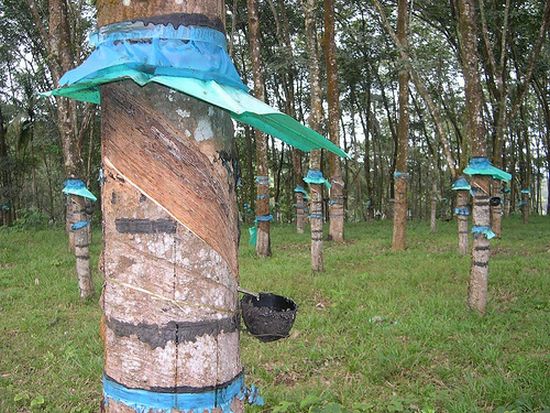
Biologists are researching whether a gene from a tropical “diesel tree” can be cloned into other plants for mass production of biofuel. The tree produces oleoresin, a compound with similar properties as diesel fuel. These researchers hope to clone the genes from the tree and re-cultivate them in algae, weeds and non-crop native Colorado plants.
Genetically modified roots improves ability to find water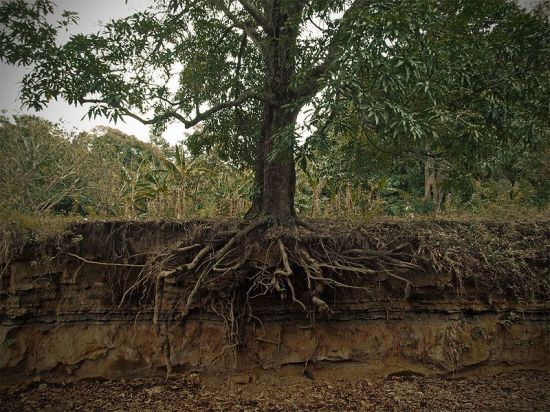
Researchers at Tel Aviv University have tried to genetically engineer plants’ root systems to improve their ability to find water necessary for their survival. The team discovered genes that control hydrotropism, a plant’s ability to send its roots toward water. The technology attempts to merge aeroponics and hydrotropism to give the best possible results. Plants that can sense water in a better fashion will be higher in economic value in the future, and that is what the technology aims at.




